
views
Home Treatment

Wear comfortable shoes that don’t put pressure on your toes. Corns result from pressure and friction on your toes, and tight or uncomfortable shoes can be one of the culprits behind their appearance. One of the most important things you can do to prevent corns from developing and to reduce the severity of any corns you may already have is to choose comfortable, well-fitting shoes. Choose shoes that are made from natural materials, such as leather and fleece, which allow for better moisture evaporation. Select shoes with fastenings like Velcro or laces so you can adjust them to fit your foot. Add a cushioning pad or insole to make your shoes more comfortable, if needed.
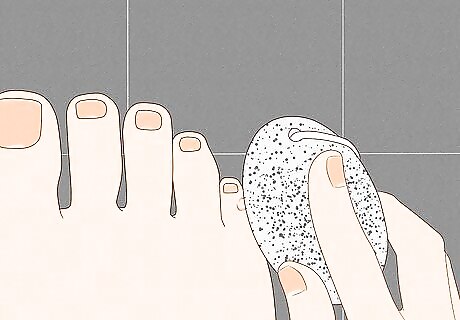
File the thickened skin gently with a pumice stone. To remove some of the dead skin, gently scrub the corn with a pumice stone. Repeat the process regularly. Some experts suggest soaking your feet in warm water for 5-10 minutes to soften the skin before you file the corn.
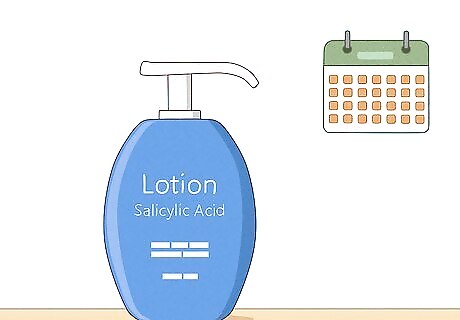
Moisturize the area daily. Choose a lotion with salicylic acid, urea, or ammonium lactate to help soften the hardened skin. Apply the lotion to the corns every day.
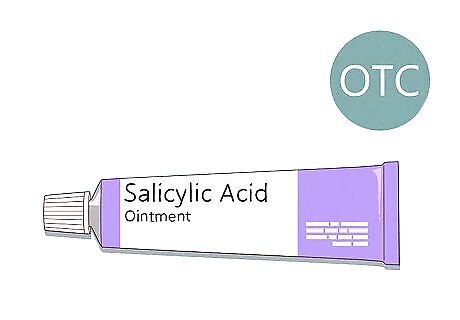
Try over-the-counter corn ointments or drops. Most over-the-counter treatments contain a minimal concentration of salicylic acid, which dissolves the keratin protein responsible for making up the corn and the thick, crusty layer of skin on top of it. Apply the product as directed on the label. One disadvantage about over-the-counter treatments is that the acids can also damage healthy skin as well as skin affected by corns, so if you use these treatments too readily, you may end up causing more damage than good. Acids should not be used by diabetics, those with impaired sensation, or those with thin skin. Always follow the instructions on the label when applying an ointment or other topical treatment.
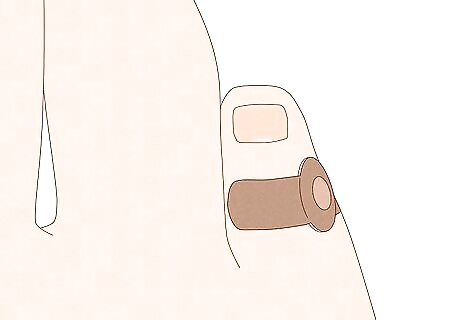
Use corn plasters to shrink the corns . These treatments stick on like an adhesive bandage, thereby cushioning the corn on your toes, but they also contain a small concentration of salicylic acid to treat the corn as it remains on. The best corn plasters are ring-shaped. They provide cushioning to the corn while holding in enough moisture to keep the corn soft, thereby easing discomfort. Since many of these pads contain an acid treatment, you should not use them with other treatments. If you need to cover the corns after applying another treatment, make sure that you use a corn pad or plaster without salicylic acid in it or a plain adhesive bandage.
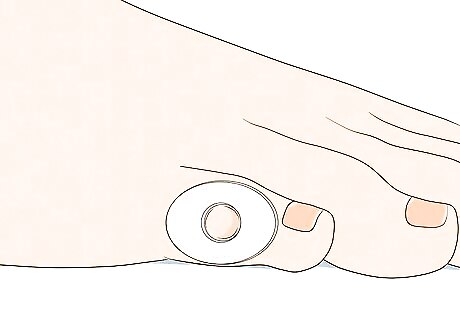
Pad the corns to prevent irritation. While padding won’t help remove the corn, it can reduce the pain. Surround the corns with small pieces of moleskin or a donut-shaped adhesive pad. This can prevent the corns from rubbing on your shoes. If you have a corn between your toes, get a toe sleeve or toe spacers to make yourself more comfortable while it heals.
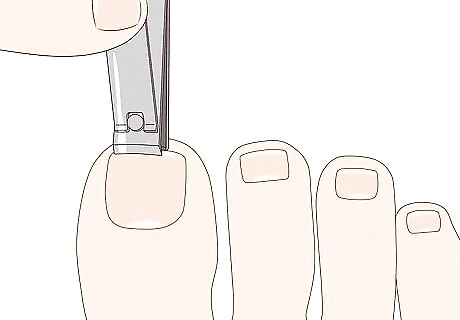
Keep your toenails trimmed. If your toenails are too long, they can push against your shoe and create pressure. Regularly trim your toenails to prevent corns from forming due to pressure.
Medical Treatment
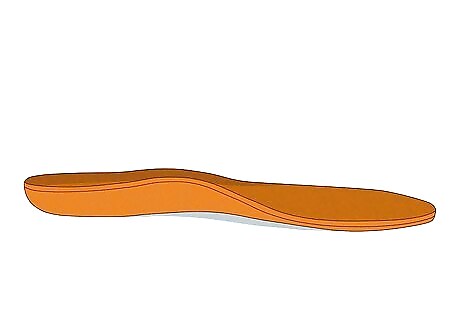
Get customized shoe inserts. Professionally fitted shoe inserts can provide just the right amount of cushioning and protection for your feet, thereby helping corns on your toes to heal faster and preventing more corns from developing. You could use standard gel inserts purchased from the store, but customized inserts will be much more effective. Talk to a podiatrist about where and how to purchase prescription shoe inserts custom-fit for your foot.

Ask for a prescription topical remedy. Prescription remedies often use higher concentrations of salicylic acid than their over-the-counter counterparts, and some prescription remedies also use other, stronger combinations of acids to accomplish the same purpose. Acids should not be used by diabetics, those with impaired sensation, or those with thin skin. Follow the instructions carefully when given a medication to prevent accidental damage to the skin around the corn.
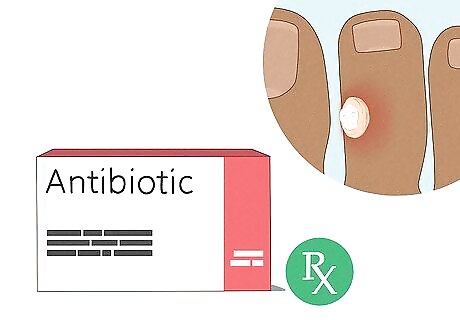
Get an antibiotic for an infected corn. If corns on your toes become infected, you may need to ask your doctor for an antibiotic to treat the infection as the corn heals. Note that an oral or topical antibiotic will only be prescribed if the corn gets infected. Antibiotics will have no effect on the corn itself and will only treat the infection.
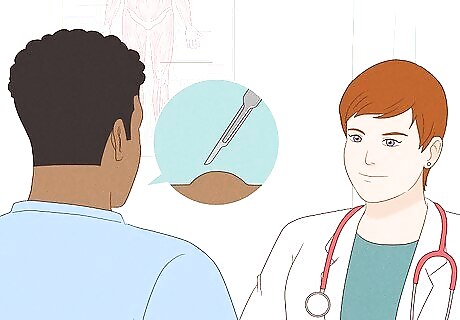
Talk with a podiatrist about removing the hardened skin. While you should not shave or cut off a corn on your own, a professional foot doctor, or podiatrist, is often able to do so safely if the circumstances warrant it. The podiatrist will remove the thickened, dead skin with a very sharp, thin blade. The procedure is painless and safe when done by a professional, and it can reduce overall discomfort while speeding up the healing process. Alternatively, a podiatrist might use ablative laser therapy to treat your corns.

Inquire about surgical intervention as a last resort. If you develop corns on your toes frequently, an orthopedic surgeon may recommend a surgical procedure to fix bone protrusions. If other treatments haven’t helped, talk to a podiatrist to see if you’d be a good candidate for surgery. Corns can develop in between your toes when the bones in your toes grow at angles that cause the toes to naturally rub up against each other. Surgery can actually realign these bones, making them straighter and less likely to collide.




















Comments
0 comment